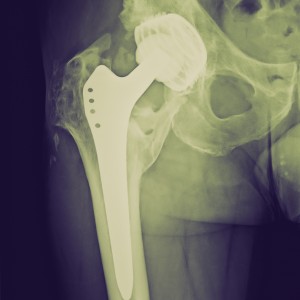 A recent study published in the journal Arthritis & Rheumatology by researchers at the University of Michigan Health System revealed that a higher fibromyalgia score is linked to a poorer arthroplasty outcome and increased pain. The study is entitled “Characteristics of fibromyalgia independently predict poorer long-term analgesic outcomes following total knee and hip arthroplasty.”
A recent study published in the journal Arthritis & Rheumatology by researchers at the University of Michigan Health System revealed that a higher fibromyalgia score is linked to a poorer arthroplasty outcome and increased pain. The study is entitled “Characteristics of fibromyalgia independently predict poorer long-term analgesic outcomes following total knee and hip arthroplasty.”
Arthroplasty corresponds to a surgical procedure with the goal of restoring the integrity and function of a joint. It is thought that the number of total knee and hip arthroplasties will increase considerably in the future based on the current trends in obesity and aging. Psychosocial factors have been linked to poorer results after knee and hip arthroplasty and studies have shown that around 20% of knee and 10% of hip arthroplasty patients fail to benefit from the desirable effect of analgesics.
In this study, researchers hypothesized that an increase in pain perception and sensory processing, as occurs in individuals who suffer from medical conditions such as fibromyalgia, may contribute to a reduced responsiveness to analgesics in primary knee and hip arthroplasty. Fibromyalgia is a disorder characterized by widespread chronic musculoskeletal pain, fatigue, stiffness and numbness in certain parts of the body, headaches, sleep disorder and mood alterations.
Researchers conducted a prospective, observational study where preoperative data from adult patients scheduled for arthroplasty was collected based on self-report questionnaires to evaluate pain severity, function, anxiety and depression. Participants also completed two self-report fibromyalgia measures, the Widespread Pain Index (WPI) and the Symptom Severity Scale (SS). Patients were divided into three groups based on their preoperative total fibromyalgia survey scores (high, moderate and low). Six months after the arthroplasty, patients were evaluated for the same parameters and using the same questionnaires.
Researchers found that only 6% of the cohort of 665 participants met the criteria for a positive fibromyalgia diagnosis. Interestingly, a higher fibromyalgia total score was found to be linked to a higher preoperative pain severity, higher opioid use, depression and anxiety, worse physical function and an increased tendency to catastrophize pain, even when the fibromyalgia score is below the threshold for an actual diagnosis of fibromyalgia.
The research team concluded that patients with a higher total fibromyalgia score have poorer outcomes after arthroplasty and that a higher fibromyalgia score can be a robust predictor of less improvement in pain. “This single, simple-to-administer measure was a powerful predictor of a poor outcome and was the only preoperative phenotypic measure to consistently show predictive utility across the different outcome domains,” wrote the research team. “As such, the measure may have value in screening for appropriateness for arthroplasty in the clinical setting.”
The biological reason why a higher fibromyalgia survey score is associated to a poorer outcome is not clear, but the research team believes that these patients would more likely benefit from analgesic therapies targeting centralized pain, such as medications, exercise, and cognitive behavioral therapy.

